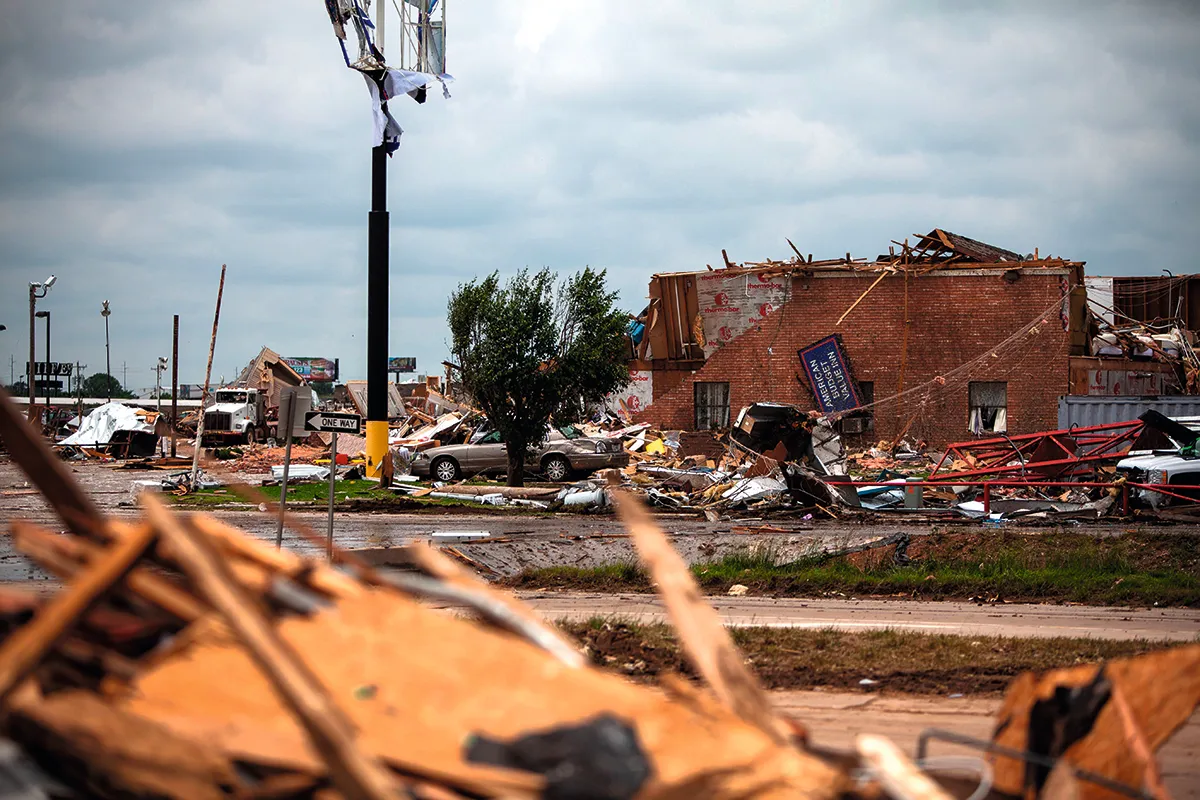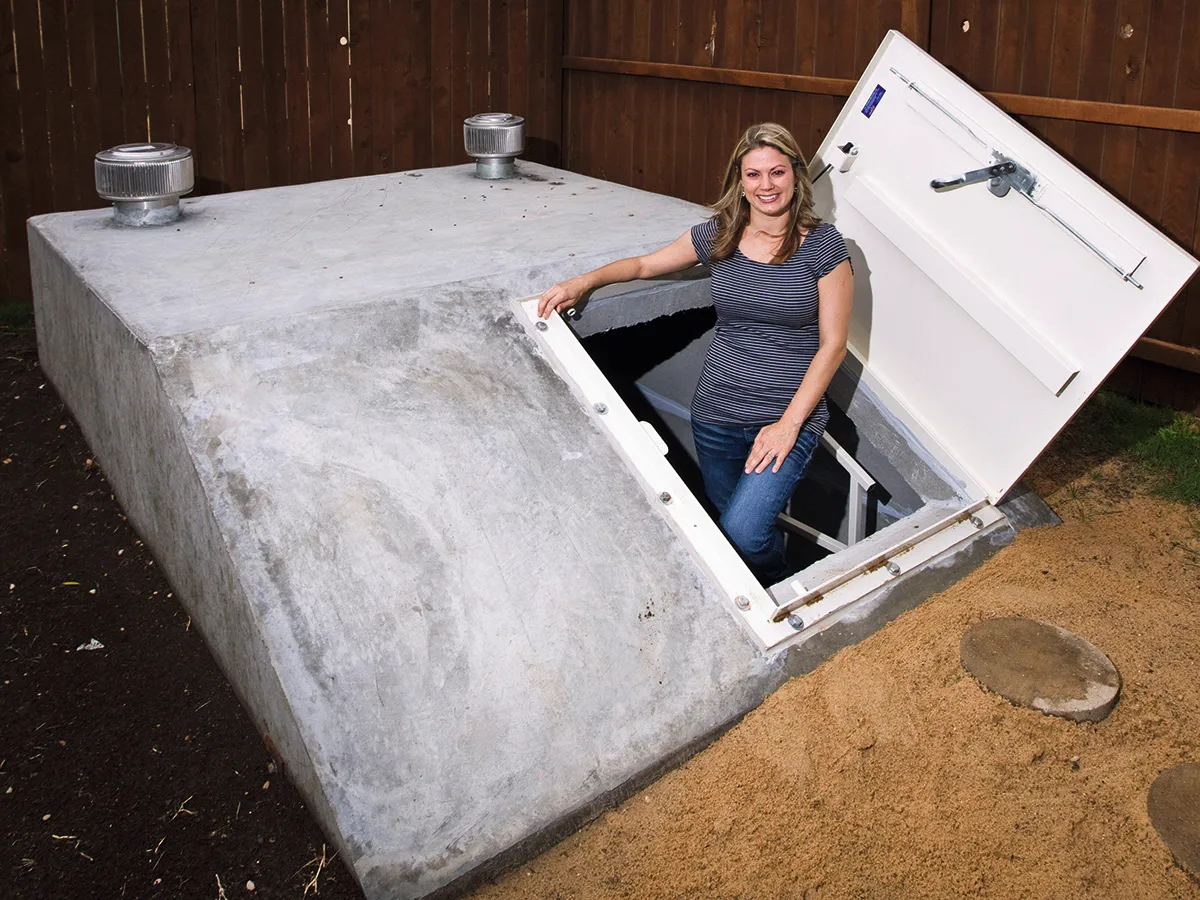Tornadoes, sometimes called twisters or whirlwinds, are intense vortices stretching from the Earth’s surface to the base of stormy, cumulonimbus clouds – these clouds extend deeply in the vertical and often have an anvil-shaped top.
Typically, tornadoes measure around 100 metres in diameter, travelling on average around five kilometres before they dissipate. Tornadoes form from mesocyclones, large-scale regions of rapidly rotating air that flow within the cumulonimbus clouds. Cool, dry air can wrap around these mesocyclones, creating a strong temperature contrast which intensifies the spinning, drops the central pressure and extends the vortex to the ground, thus the tornado is born.
As tornadoes are made up of air, they are invisible to the naked eye unless they are transporting some other material, such as condensed water in the form of water vapour, dust, or larger debris, so more often than not take on a dark appearance. Given the chaotic nature of tornadoes, they are a nightmare to predict, so often it is the original mesocyclone that will start to alert the forecasters on where to look.

What are the different types of tornado?
Weather agencies around the world include different phenomena in their classification of tornadoes. So for instance, intense waterspouts, which form over water from a mesocyclone, often only officially count as a tornado if they make landfall. An extremely rare subset of these are known as snowspouts – essentially the same type of circulation but formed in regions of snow.
There are also a number of other tornado-like vortices, for instance, dust- or fire-devils. The former being a small vortex consisting of dust that can form from updraughts without the need for storm clouds. The latter being a small vortex funnelling fire, often formed in large wildfires. While these phenomena typically look much like tornadoes, they are generally not considered part of the grouping, because their formation is so different, and the vortex itself does not usually extend from the Earth’s surface to a cloud base.

When is tornado season?
Tornadoes can occur at any time in the year if the conditions are favourable but are far more common during the stormy season. For most mid-latitude countries this is often spring or autumn, because tropical and polar frontal systems meet in these transitional seasons, giving rise to the stormy weather.
However, even within a continent, there is variability in the most active months. For instance, in the US, dangerous tornado activity in the south maximises around March or April, but in the north, the activity maximises around June or July. Some of the stronger tornadoes even persist into southern Canada during this period. In South Asia, it is still the transitional months, but the wetter monsoon seasons also play a role, which run from March to May.

Where are you most likely to bump into a tornado?
Tornadoes occur where the atmospheric and land conditions for tornado-generation are most common, and nowhere are these ingredients more prominent than the Great Plains of the US, which gives rise to ‘Tornado Alley’. Tornado Alley is generally accepted to extend from Texas to South Dakota and contains more violent tornadoes than anywhere else in the world. Canada, for instance, comes in at a distant second with an order of magnitude fewer tornadoes.
While the most intense tornado activity is found on that continent, tornadoes also exist in a number of other places, namely in the mid-latitudes which have favourable conditions for the storm systems. Argentina and Brazil give rise to their own tornado alley around the Pampas Plains, but also parts of Europe, South Africa, Australia, New Zealand, and South and East Asia. Indeed, the country with the highest density of tornadoes for its area is actually the UK, where we see around 30 tornadoes each year.

How to survive a tornado
Loss of life during a tornado most often occurs from shelters collapsing, or debris turning into lethal projectiles. The split between these depends on the development of the country. So for instance, while America has the strongest tornadoes, the deadliest ones actually occur in Bangladesh, due to poor infrastructure and insufficient warming systems.
The amount of devastation depends on the tornado strength, which is measured on the Fujita (F) Scale. The weakest tornadoes, termed F0 tornadoes, have maximum winds around 113km/h (70mph) and are not strong enough to cause any real major infrastructural damage. However, they can uproot small trees, and turn small objects into dangerous projectiles, so staying in sturdy homes away from windows is a good idea during these events.
On the other end of the scale, F5 tornadoes are devastating. There is no surviving these without adequate cover, such as a dedicated storm shelter, or a basement of a tornado-resistant building, and even then, getting yourself under a sturdy table is a good idea.
About the author -Prof Dann Mitchell
Dann is professor of climate science at the University of Bristol. His research focuses on climate change and how it affects atmospheric circulation and extreme events.
Read more:
- How do tornadoes rip roofs off?
- Why can’t we see the wind?
- What’s the difference between a cyclone and a hurricane?
- Will Europe get more hurricanes in the future?
To submit your questions email us at questions@sciencefocus.com (don't forget to include your name and location)